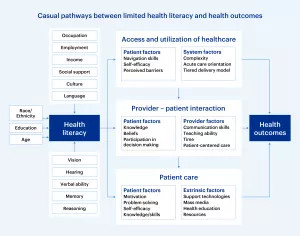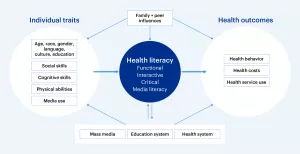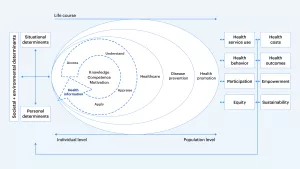About
Causal models and frameworks help us understand how health literacy barriers translate to poor health outcomes.
Causal pathways linking health literacy to health outcomes
Causal pathway model to explain associations between limited health literacy and health outcomes.

Paasche-Orlow, MK, Wolf, MS. (2007). The causal pathways linking health literacy to health outcomes. Am J Health Behav 31(1): s19-s26.
A framework for studying adolescent health literacy
Framework for a justification of studying health literacy in adolescents for future research.

Manganello, JA. 2008. Health literacy and adolescents: a framework and agenda for future research. [italics: Health Educ Res 23(5):840-7.
Read article
Medical and public health views of health literacy
This model integrates medical and public health views of health literacy

Sørensen, K., Van den Broucke, S., Fullam, J., Doyle, G., Pelikan, J., Slonska, Z., & Brand, H. (2012). Health literacy and public health: a systematic review and integration of definitions and models. BMC Public Health,12 (80).